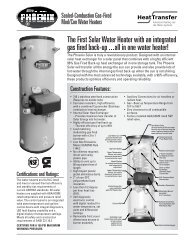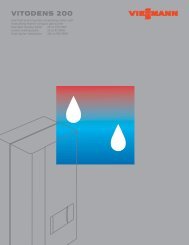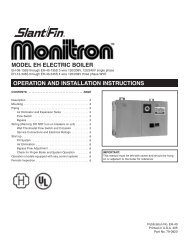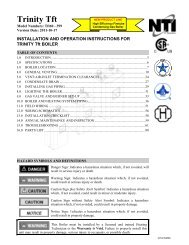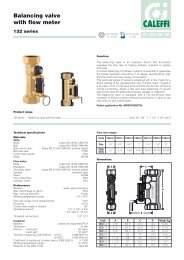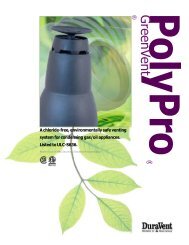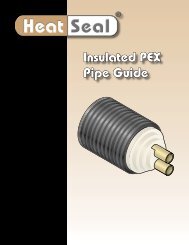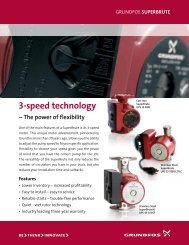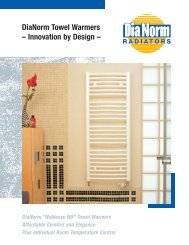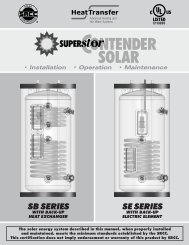Apricus Solar Water Heating System Installation and Operation ...
Apricus Solar Water Heating System Installation and Operation ...
Apricus Solar Water Heating System Installation and Operation ...
You also want an ePaper? Increase the reach of your titles
YUMPU automatically turns print PDFs into web optimized ePapers that Google loves.
<strong>Apricus</strong> <strong>Solar</strong> Collector <strong>Installation</strong> & <strong>Operation</strong> Manual - USA3.8. Boosting3.8.1. Electrical Boostinga) Retrofits: <strong>Solar</strong> thermal may be retrofitted to an electric boosted tank or a dedicated solar pre-heat canbe installed that feeds the existing electric boosted tank.b) <strong>Heating</strong> Elements:i) Single Tank: The electric tank should ideally be a twin element (mid <strong>and</strong> bottom) or single element(mid). For a twin element tank conversion, the bottom element can be disconnected or have a switchinstalled, which allows it to be turned off during high solar radiation periods (summer). The midelement should have a timer installed, so that ON <strong>and</strong> OFF periods throughout each day can be set.Alternatively, the boosting feature of the solar controller can be used to accomplish this.ii) Twin Tank: If using the electric boosted tank as a secondary tank, which is supplied by solar preheatedwater, then no change to the element function is required.c) <strong>Solar</strong> Integration: <strong>Solar</strong> needs to be given an opportunity to heat the water in the tank, so the timer onthe mid element should be set to come on at 2 pm or 3 pm for 2-3 hours (ideally during daytime off-peakperiod), ensuring hot water for evening showers. Shower habits must be considered to ensure sufficient hotwater each day.For example: If showers are normally taken in the morning, an additional boost between 3-6am isrecommended. The element will only operate for as long as is required to achieve the targettemperature, which is normally set at 140°F (60°C). 3 hours is normally long enough to heat cold waterto the required temperature, but each heater is different (check the kW rating of the element). Seealso below information about calculating heating time.d) Additional Boost: If hot water usage patterns are irregular or if hot water will not always be enough, aboost button may also be installed, which will activate a 1-2 hour boost. The length of the boost will dependon the volume of the tank <strong>and</strong> element wattage.For example: <strong>Water</strong> volume above the element is 40 gallons, an 80°F temperature rise is required <strong>and</strong> theelement has a 3.6 kW output.3.6 kW output for 1 hour will provide 12,283 Btu. 40 G x 8.34 lbs = 333.6 lbs of water x 80°F = 26,688Btu.Dividing the required heat by the hourly output will give you the run time: 26,688 / 12,283 = 2.2 hours.WARNINGAny modification to the electrical wiring of the storage tank must be completed by anauthorized electrician <strong>and</strong> meet relevant regulations. Power supply must be turned OFF<strong>and</strong> locked (to avoid accidental connection) while any electrical work is being completed.Take extreme care when working in wet areas to avoid potential contact with energizedwiring.3.8.2. Instant/Tankless Gas Boostinga) Pros & Cons: The most efficient <strong>and</strong> environmentally responsible boosting format for most domestic <strong>and</strong>commercial applications is a post-boost, tankless gas booster. The key advantage is that it only heats wateras needed. The solar heated water is only boosted if the temperature is not hot enough. The only realdisadvantage of this system is if the peak hot water dem<strong>and</strong> exceeds the Btu output of the tankless unit,when the solar storage has been exhausted, the hot water dem<strong>and</strong> at the tap may not be met.b) <strong>Operation</strong>: The heater chosen must be able to accept water pre-heated up to 160°F (70°C) from the solartank. If the water is already hot enough, it will pass straight through the booster without causing it to fire up.If it is not hot enough, the booster will raise it to the 140°F (60°C ) target temperature. This targettemperature is higher than normal for a tankless water heater (normally 122°F or 50°C) because localregulations may require it to kill Legionella bacteria. The water exiting the tankless water heater must betempered down to 122°F (50°C) by an anti-scald valve.Copyright 2011 – <strong>Apricus</strong> Inc Doc: A7-05.4.1.4-PB-1.9 Page 26 of 126



